








The following report captures information collected from the “CoFA 2021 Instructional Needs Planning” survey. The total amount of responses for the report is 110 people.
The following departments reported the respective number of responses:


These diagrams show the general roles held by those who took the survey. The roles are broken down by department:
Department of Art and Art History: Department of Theatre and Dance School of Design and Creative Technologies:

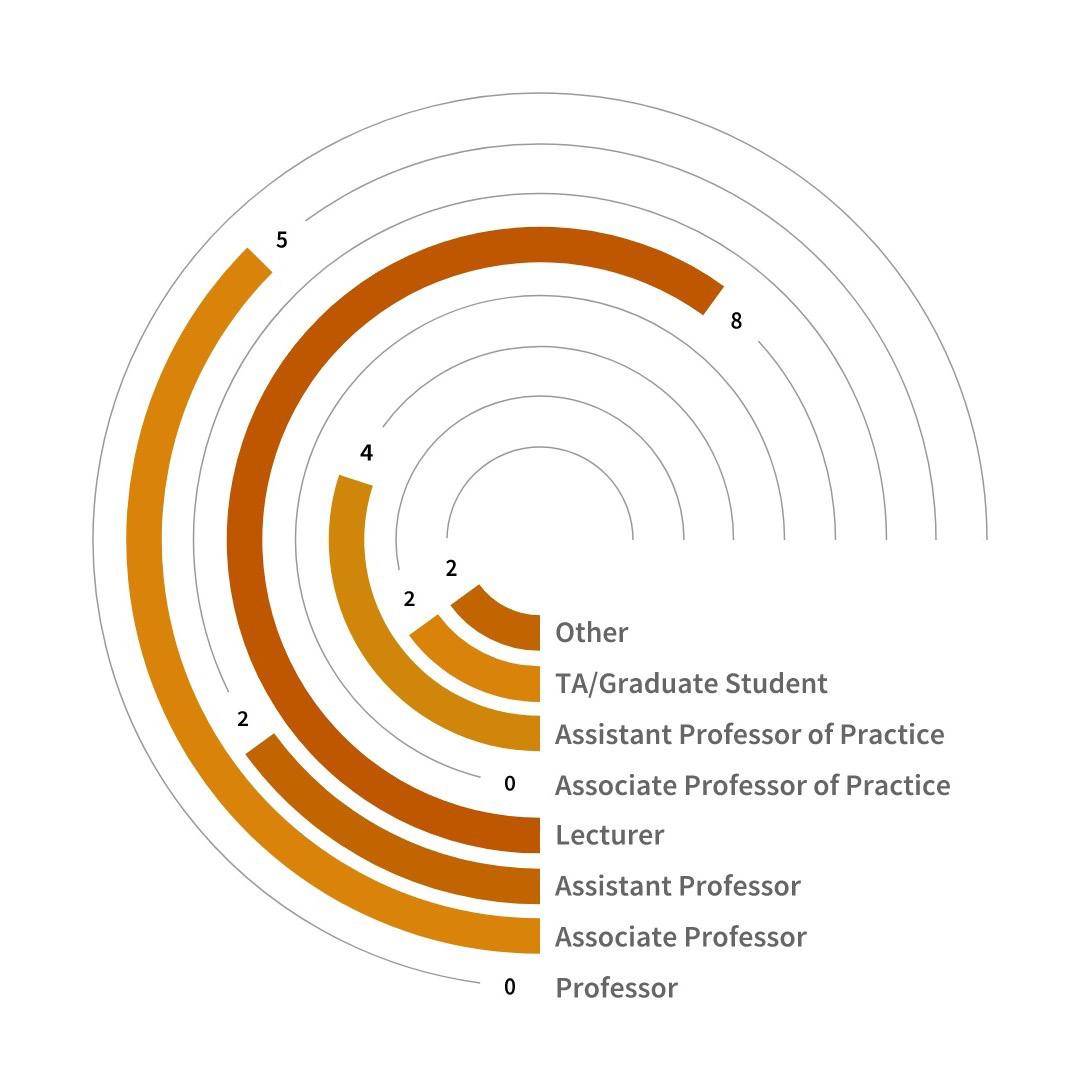

College of Fine Arts (general) Sarah and Ernest Butler School of Music
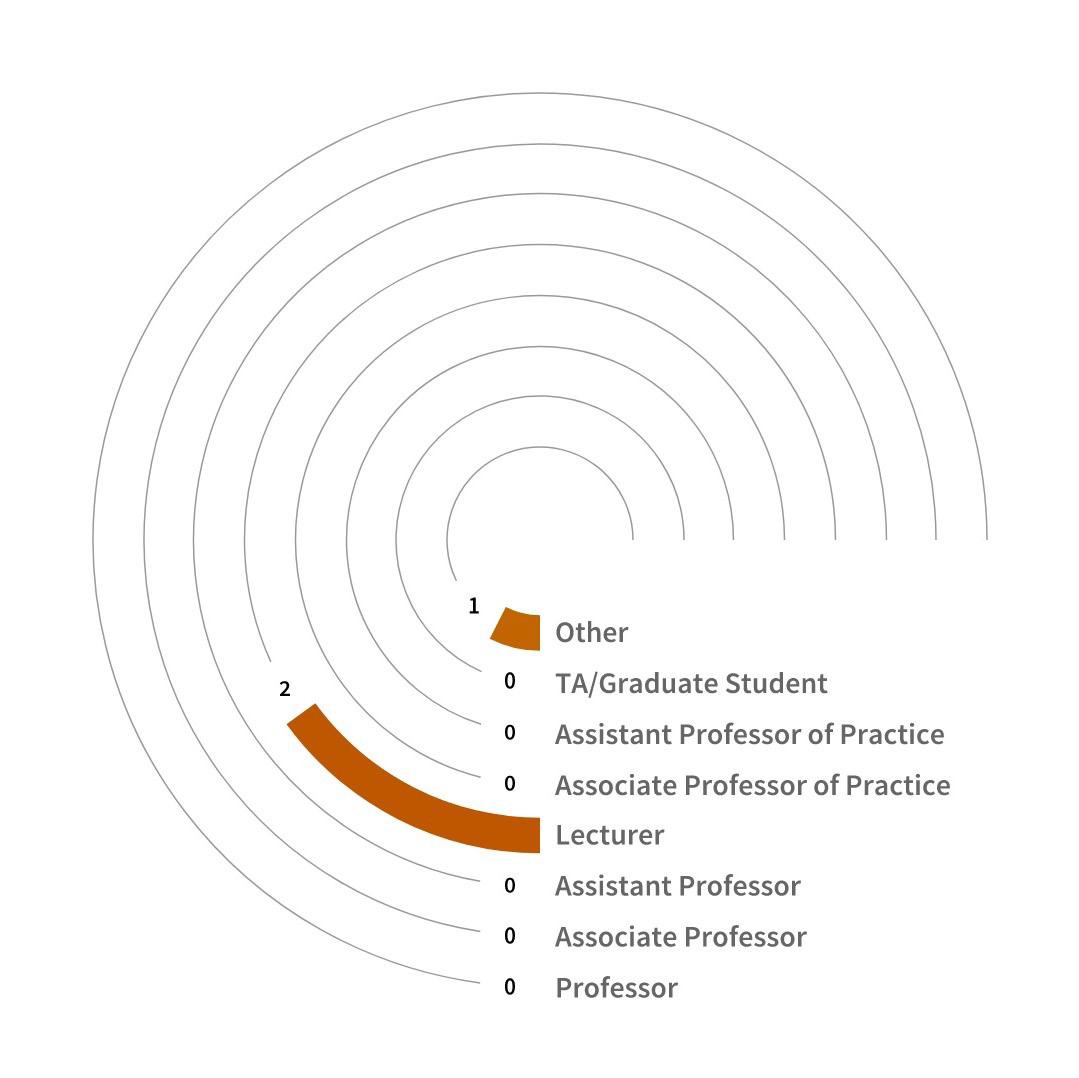
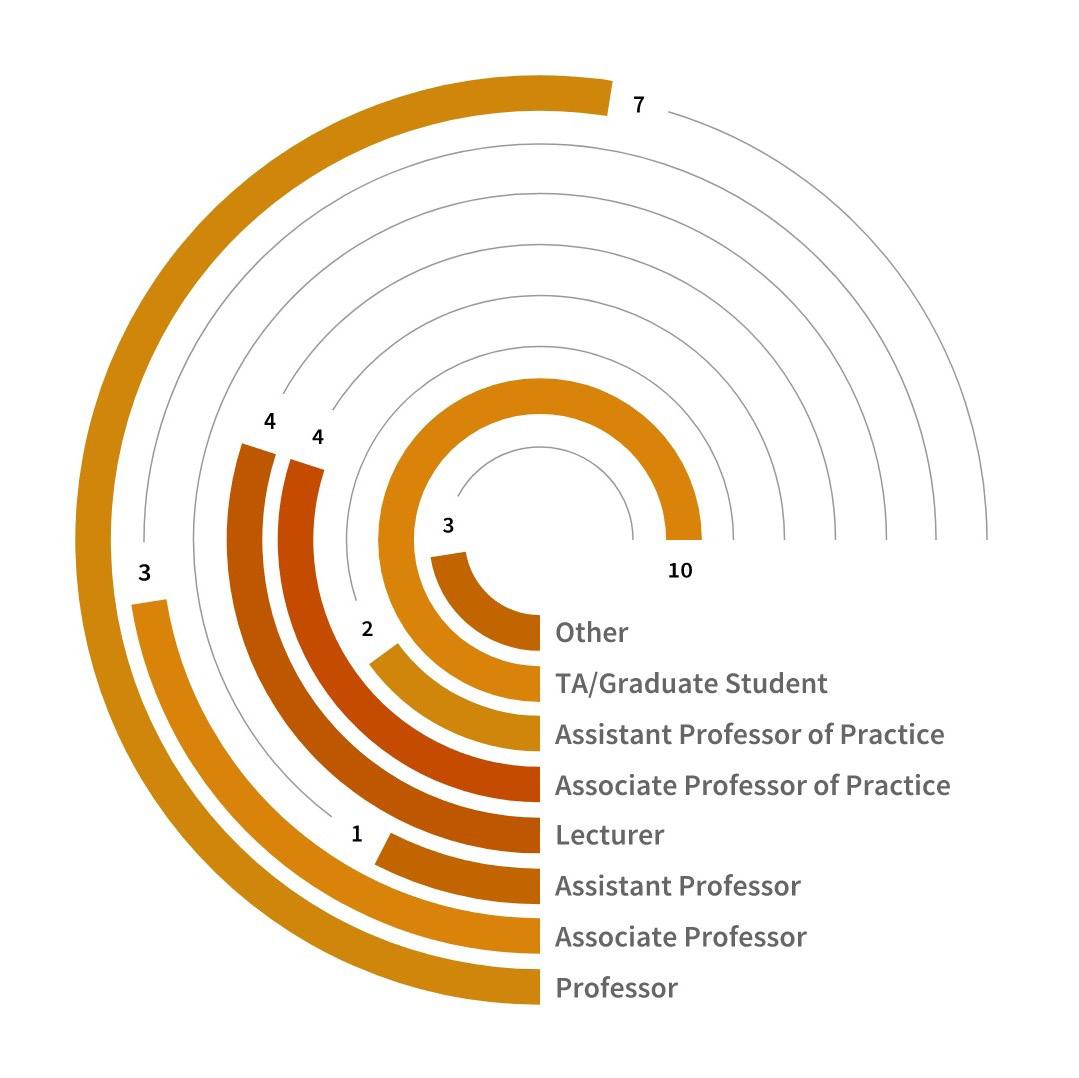

The following pages show the break down and diagrams number of responses for each question. Questions:
“What instructor mode are you scheduled to use for most of your courses in Fall of 2021?”
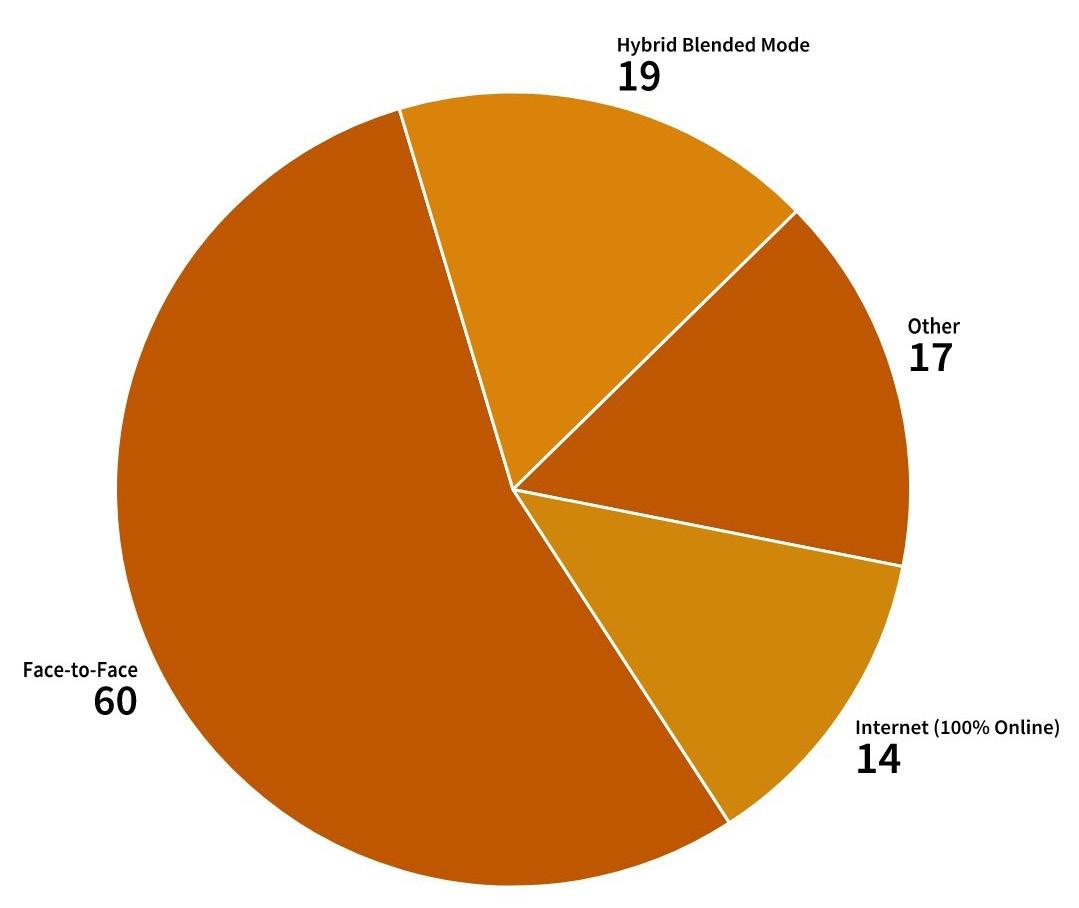
Comparison Diagram: Scheduled v. Prefered
“Imagine that all of your COVID-19 safety concerns were addressed and regardless of how your courses are currently scheduled: Going forward, which instructor mode would you PREFER to use for most of your class meetings in Fall of 2021?

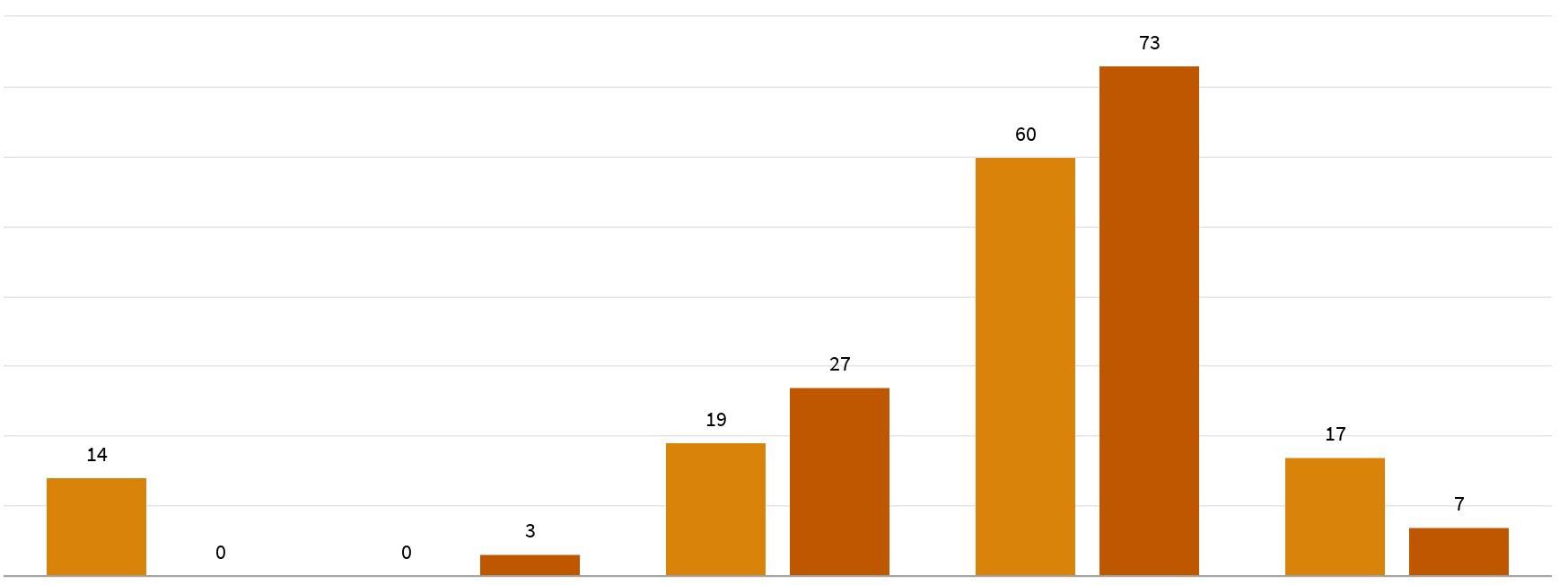

Questions:
“Looking back, the most substantial (positive) transformations that I made in my teaching over the past year occurred were related to: ” “What categories would you like more support with?”
Results and Responses:
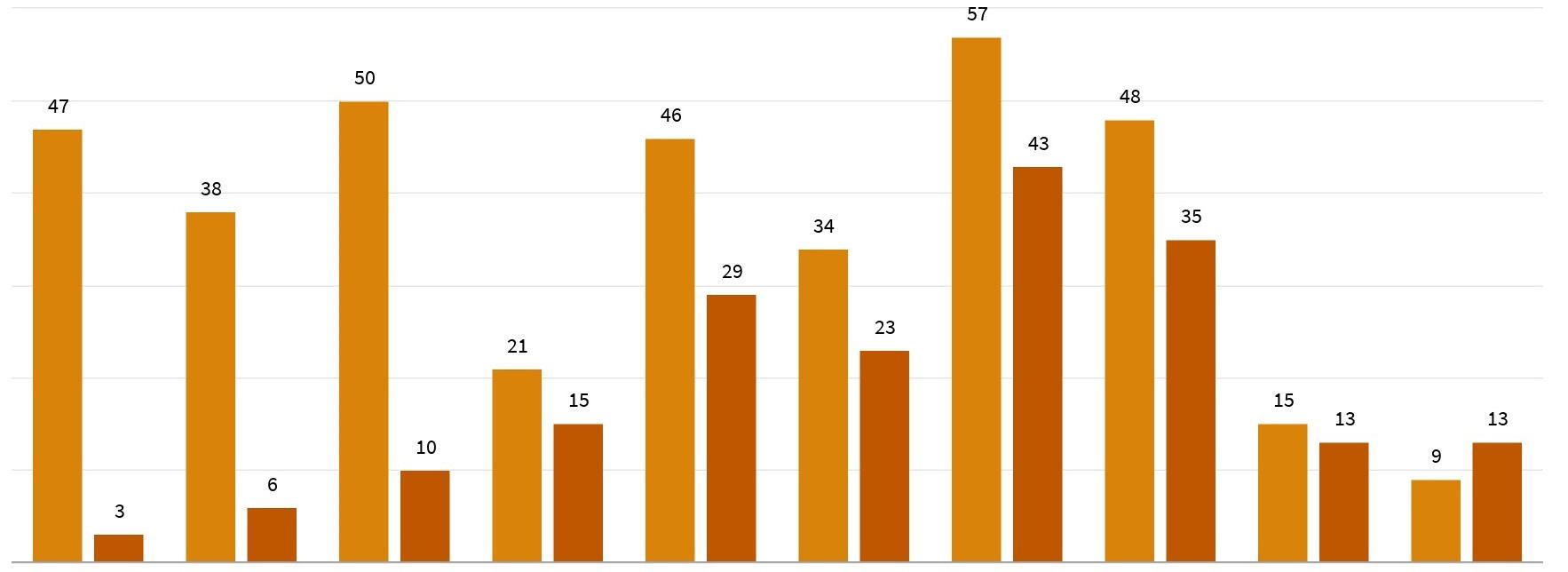
“Other” Responses for Positive Transformations:
• “Social Emotional Learning; Self-care check-ins”
• “I really made a lot of use of Zoom breakout rooms + Google Docs or Google Slides or Padlets: this model has been pretty transformational in my teaching.”
• “Using the lens of “empathy” for all decisions”
• “Options in how learning was submitted - art, video, audio recording. Also included SEL and ice-breaker type art/learning games”
• “Huge amount of effort and personal monetary investment in devices (from mics, headphones, audio interfaces, and keyboard that was up to date tech wise) all to provide a zero latency online experience. Also investment in mobile hotspot”
“Other” Responses for Areas for More Support:
• “Teaching students with disabilities”
• “Subtle ways to improve online engagement”
• “I want to stay abreast of instructional technology to enhance learning in art”
• “gamification?”
• “Teaching space appropriate for Voice lessons and Performance class”
• “Experimental learning experiences; precision control of technology tools”
• “Furthering my skills- collaborating with practitioners in my department”

Question:
“CoFA will be offering certificates for acknowledging teaching and learning activities, such as these. Which of the following certificate-based activities would you be interested in participating in?”
Results and Responses:
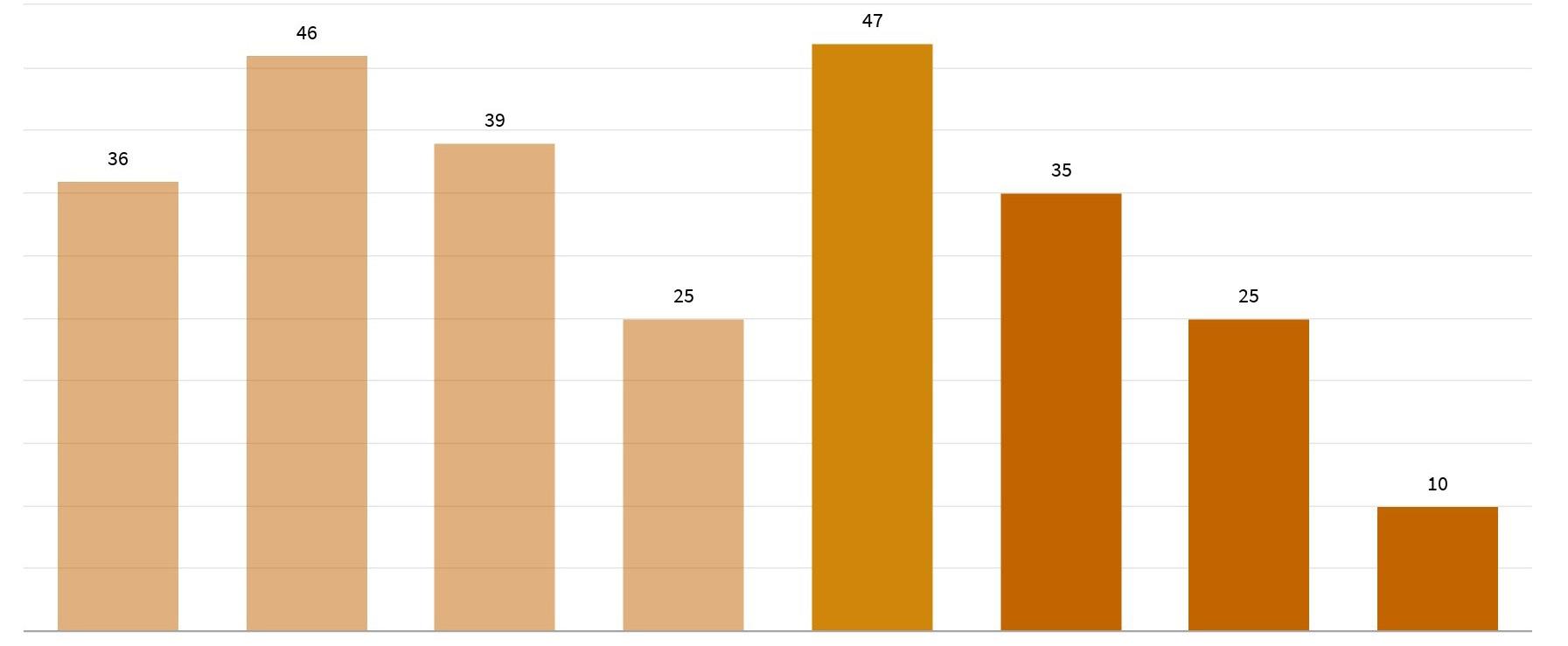
Synchronous Online Workshops Asynchronous, SelfPaced Workshops Hybrid Workshops (some self-paced and some live components)
In-Person Workshops
Master classes from CoFA Faculty Master classes from External Faculty
Scholarly Journal or Book Club
Other
“Other” Responses for certificate areas:
• “Peer discussion groups of techniques and experiences”
• “how to film my class if I’m teaching live”

Question:
“Since the pandemic began, how often did you engage in the following:”
Results and Responses:

Question:
“Next semester, like any semester, some students will not be able to attend class in-person. Which of the below would you prefer to implement in these cases.”
Results and Responses:
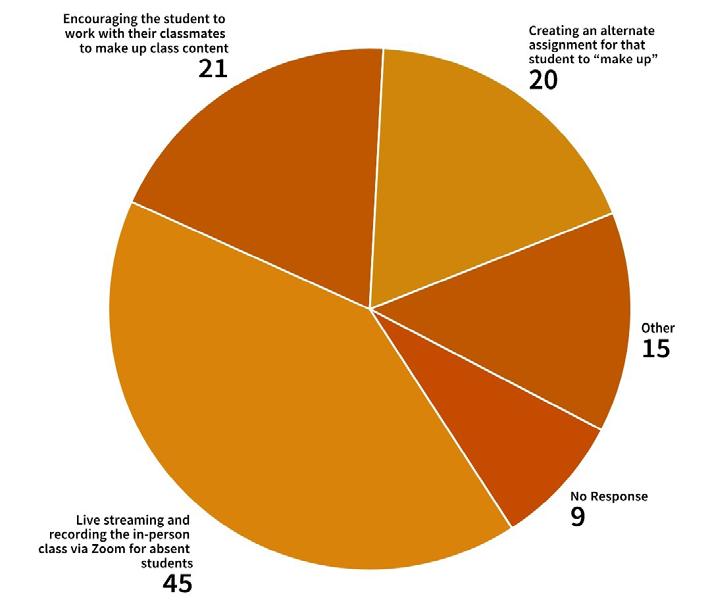
“Other” Responses About Implementation:
• “Teach applied lessons to them via the internet”
• “My courses are highly participatory, so I would suggest they take another course if they cannot be in person and I am 100% in-person.”
• “I’m not sure how to take this question. For students randomly absent but who normally attend in-person class, then they would need to make up content with their classmates. For students unable to attend an in-person class at all for the entire semester due to health reasons, they would need an alternate assignment.”

Question:
“For different reasons, some faculty have engaged in a handful of activities to learn how to teach more effectively online, some engaged in daily activities, others engaged in no activities and still others in some variation of the above. Since the pandemic began, how often did you personally engage in activities to improve your online teaching?”
Results and Responses:
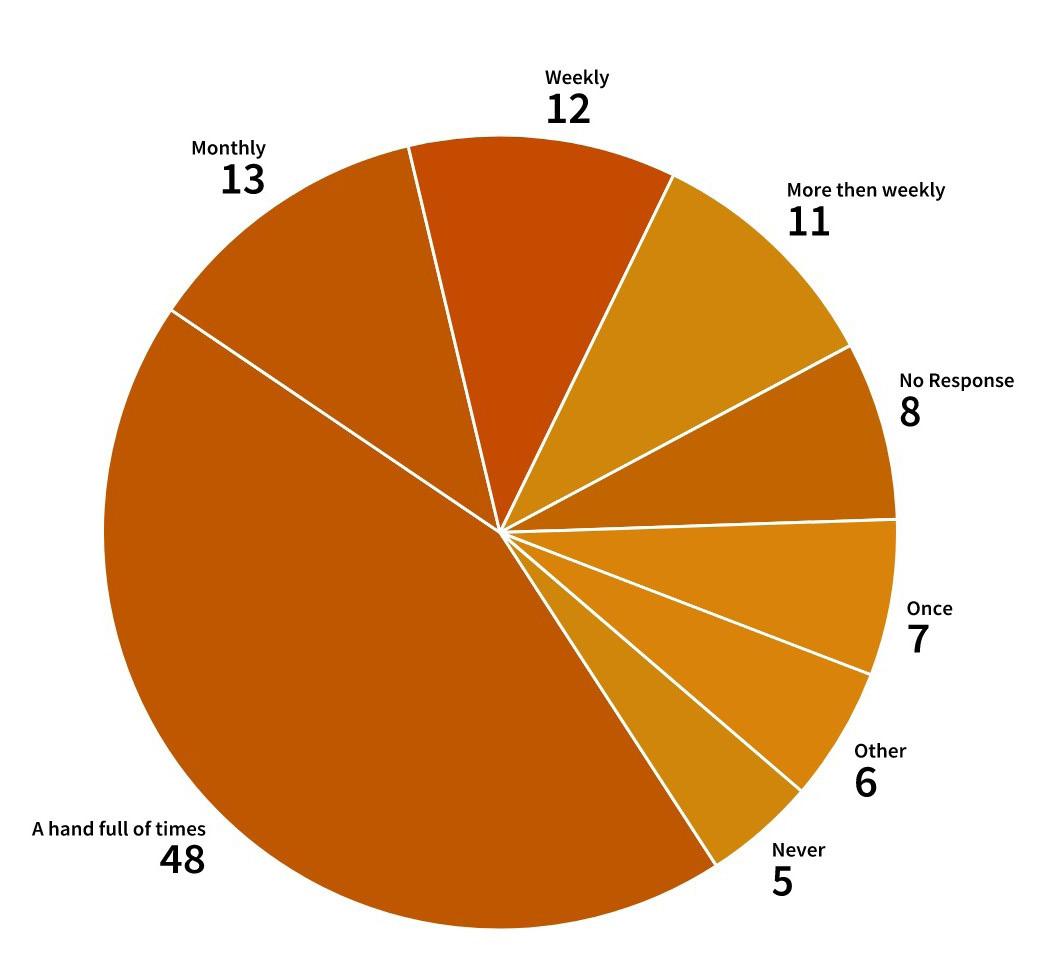
Question:
“Other” Responses About Engagement:
• “I met with friends in my field from around the country about half a dozen times or more during the summer of 2020. And I’ll be meeting at least once this summer with them to debrief. But we didn’t meet during the school year: everyone was too overwhelmed.”
• “I think every class I taught was an activity that helped me learn to teach more effectively online. I got the most out of responding to my classes; this was a daily activity where I learned what was working and what was not. I also attended a few workshops.”
• “A handful of times for topic-specific or instructed topics and techniques. In addition, I made it a point to try a new feature, technique, tool, method, resource, etc. whenever I was participating in or planning an online experience. (eg, If I was scheduling a quick conversation among colleagues, I would look for a new meeting platform (“let’s use Google Meet instead of Zoom”) or I would schedule it with a different calendar app in order to get new perspectives on tools.)”
“During the pandemic, some faculty tried novel and distinct teaching and learning activities that they want to maintain going forward and some tried new things they want to eliminate. How many distinct activities that you tried during the pandemic do you want to keep? ”
Results and Responses:
None = 5 Responses | One = 12 Responses | Two = 32 Responses | Three = 17 Responses
More than three = 31 Responses | Other = 5 Responses
Other” Responses About Maintaining Improvements:
• “ will leverage many collaborative activities and externalization methods that Miro affords”
• “Unquantifiable”

Questions:
“What categories do the novel teaching and learning activities that you want to keep fall into?” “What categories below do you want more support with?”
Results and Responses:
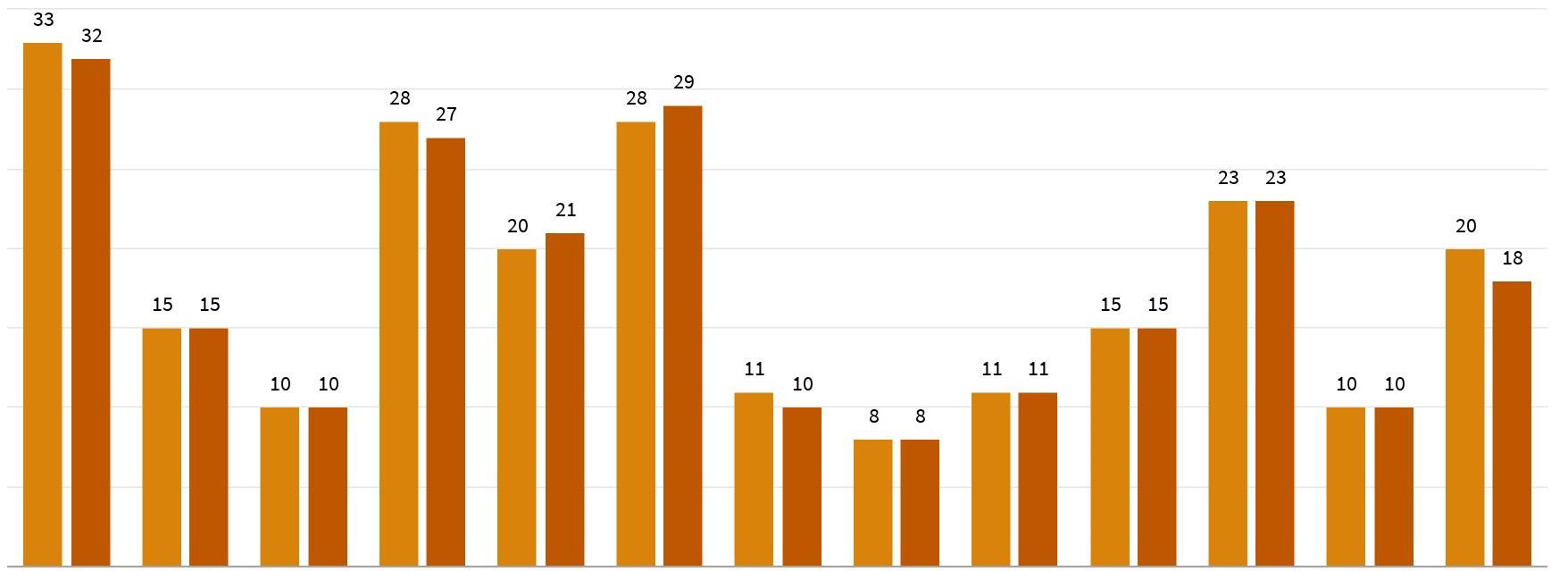
Canvas Options Virtual Guest Artists and Lectures Presentation Software (Power Point, Keynote, Prezi)
Online Visual Communication Tools (e.g. Mural, Miro, Padlet, etc)
Collaborative Reading Software (Perusall, hypothesis.is)
Online Communication Tools (Slack, Teams, Discord, etc.)
“Other” Responses About Novel Teaching and Learning: “Other” Activities to Keep:
• “microcontroller kits (Arduino)”
• “Jamboard”
• “Online, anonymous peer critique activities”
• “The biggest limitations to bringing new practices into the classroom are I see hardware and ITS support.”
• “asynchronous activities”
• “Increased Peer evaluation” “Other” Areas for Support:
• “Peardeck, and embedding into Google Slides with recorded video presentation and captions”
• ”Designing a workable hybrid model for music teaching”

Question:
“Based on where you are right now with your teaching, how confident are you in the following?”
Results and Responses:

I know enough about effective online teaching that I can incorporate it in at least one way in my courses next Fall
I can explain at least one method for effective online teaching
I can identify at least one person in my Department who is using effective online teaching approaches
I can identify at least one person in COFA, but outside my Department, who is using effective online teaching approaches
I can teach myself new ways of engaging in online teaching methods
I can explain specific benefits that my students gain as a result of online learning activities
effectively online that are not as effective in person

Question:
“How close does the following statement align with how you feel right now?” “The biggest question I have ishow am I going to figure out what elements of online instruction should I keep for Fall 2021?”
Results and Responses:
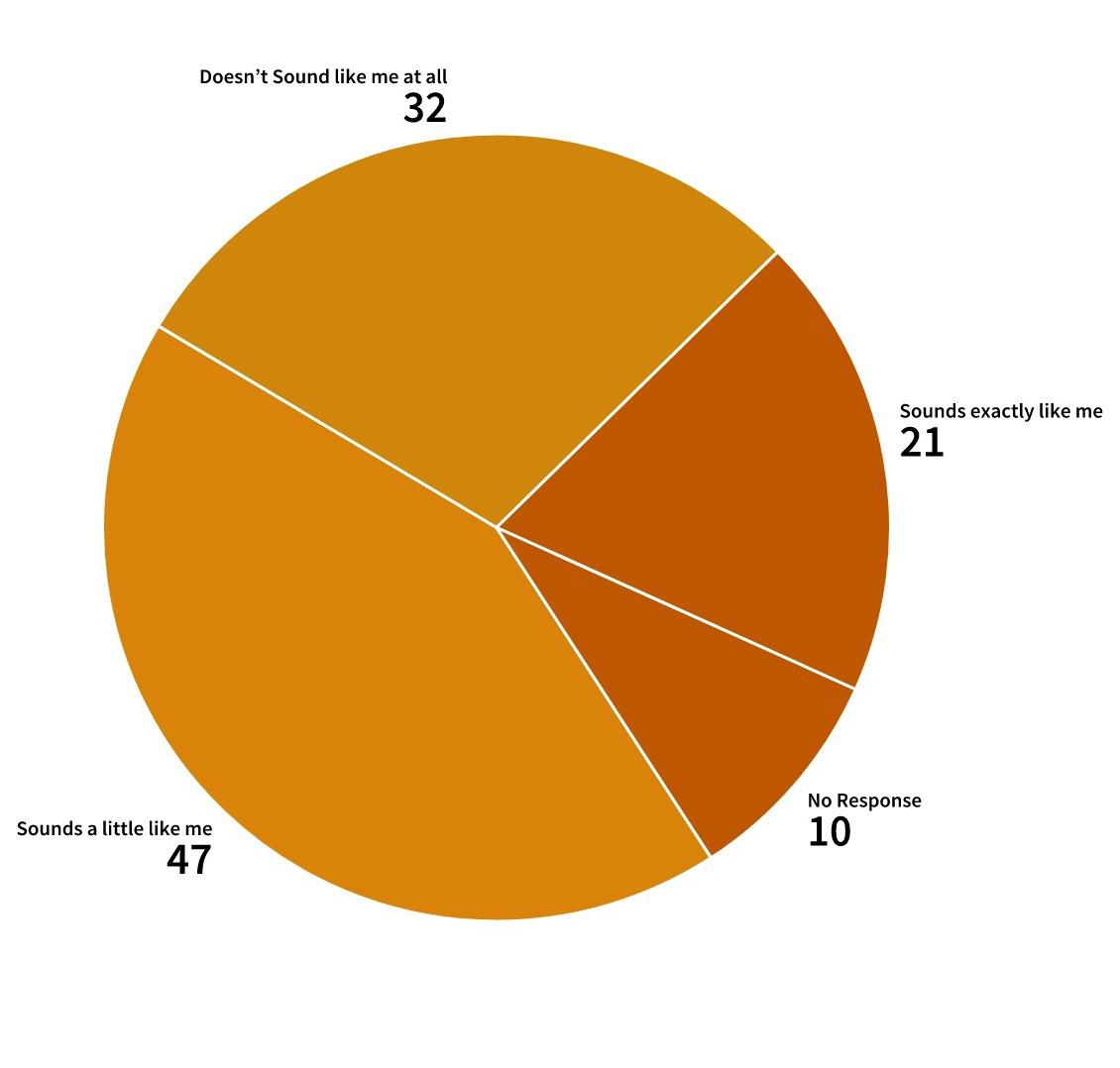
Question:
“Rewrite the statement to sound more like you: The biggest question I have for the fall is....”
A few Responses:
• “How I am going to get it all done.”
• “I would like to know the safety procedures. Also, I would like to know the likelihood of switching immediately to virtual instruction mid-semester/random times.”
• “Dealing with the uncertainty of not knowing how many students might need delivery of the class that is not face to face along with the need to design a new course.”
• “My biggest curriculum planning issue is to deal with large class sizes and appropriate social distancing while maintaining a productive classroom.”
• “How to structure the course with so many unknowns.”

Face-to-Face is the most scheduled and preferred mode for the Fall 2021 Semester.
Responses reflect “content (type), “Remote Visits from Guest Artists and Lecturers,” “Anti-racist and Inclusive Approaches,” “Technology Related,” and “My Use of Canvas, as top areas of positive transformations made to teaching over the past year. Responses reflect “Technology Related,” and “My Use of Canvas,” categories as top areas where support is needed for teaching in the past year.
CoFA faculty and affiliates are most interested in certificates in “Masterclasses from CoFA Faculty,” and “Asynchronous, Self-Paced Workshops.”
Since the pandemic, the majority of CoFA faculty and affiliates never, “created different learning activities for International students in different time zones,” and sometimes, “created asynchronous learning activities for students for those who could not attend class live,” and “replaced scheduled live, synchronous class time with asynchronous course assignments or activities”
For students not able to attend class in-person CoFA instructors are most willing to “live stream and record the in-person class via Zoom for absent students,” however instructors are uncertain how to answer the question when not being able to attend class correlates to lack of engagement.
CoFA faculty mostly engaged in activities to improve your online teaching “a handful of times.”
The majority of CoFA faculty want to maintain more than three novel and distinct teaching and learning activities going forward.
Concerning novel teaching and learning, areas where some CoFA faculty and affiliates have an activity that they want to keep, other CoFA faculty and affiliates need more support.
The majority of CoFA faculty and affiliates express a high self-reported self-efficacy in teaching except in confidence that “there are teaching activities that I can do effectively online that are not as effective in person.”
CoFA faculty and affiliates are excited to re-engage in instruction in the Fall 2021 semester, however, many are still concerned with safety, re-adjustment, and uncertainty. There were many improvements to engagement and instruction over the past year as highlighted. Overall, CoFA faculty and affiliates are most looking forward to re-engaging in in-person instruction and contact but need further tools, communication, and support to feel effective and confident.